环境准备
已有 Kubernetes 环境(简称 K8),本实践基于自建 Kubernetesv1.23.1,观测云 Datakit 版本 1.2.13,Nginx1.17。Datakit 已经部署好,Datakit 配置文件 container.conf 通过 ConfigMap 方式管理。
注:(阿里云容器服务(Alibaba Cloud Container Service for Kubernetes)或其他云服务商的 Kubernetes 配置原理类似。
前置条件
Nginx 日志在 K8 环境中的输出为 Stdout 方式,而非文件方式。观测云 Datakit 以 DaemonSet 部署后,默认采集 K8 内部所有 Stdout 日志输出,包括集群内部组件的 Stdout 输出方式,如 CoreDNS(需开启日志)。本文涉及的日志均为 Stdout 方式输出。
注:Stdout 是开发工程师写代码时,选择日志控制台的输出方式,
如:<appender name="console" class="ch.qos.logback.core.ConsoleAppender">
白名单需求
Datakit 部署完成后,按需采集指定的业务 Pod 日志、K8 集群组件的日志,后续新增的未指定的业务 Pod 日志不会采集,另外对同一个 Pod 里的多容器日志采集只采集其中一个或多个。
本文通过观测云采集器 Datakit 不同的日志过滤方法来实现,使用给日志加 Annotation 标注(包括过滤 Pod 内部其他容器产生的日志)和 container.conf 中的 container_include_log = []组合来实现。
更详细日志处理原理见《Datakit日志处理综述》 一文。
实现方式
方式一 使用 container_include_log = []
只采集集群组件 coredns 和 nginx 日志,container_include_log 用正则语法编写 image 的名称,具体见《根据容器 image 配置指标和日志采集》
[inputs.container] docker_endpoint = "unix:///var/run/docker.sock" containerd_address = "/var/run/containerd/containerd.sock"
## Containers metrics to include and exclude, default not collect. Globs accepted. container_include_metric = [] container_exclude_metric = ["image:*"]
## Containers logs to include and exclude, default collect all containers. Globs accepted. container_include_log = ["image:*coredns*","image:*nginx*"] container_exclude_log = []
exclude_pause_container = true
## Removes ANSI escape codes from text strings logging_remove_ansi_escape_codes = false ## Maximum length of logging, default 32766 bytes. max_logging_length = 32766
kubernetes_url = "https://kubernetes.default:443"
## Authorization level: ## bearer_token -> bearer_token_string -> TLS ## Use bearer token for authorization. ('bearer_token' takes priority) ## linux at: /run/secrets/kubernetes.io/serviceaccount/token ## windows at: C:\var\run\secrets\kubernetes.io\serviceaccount\token bearer_token = "/run/secrets/kubernetes.io/serviceaccount/token" # bearer_token_string = "<your-token-string>"
[inputs.container.tags] # some_tag = "some_value" # more_tag = "some_other_value"
复制代码
实现效果
这样就按需采集指定 image 名称的 Pod 日志,如下图:
方式二 组合 container_include_log = []和 Annotation 标记
只采集集群组件 coredns 和 nginx 日志,同时通过 Annotation 对 nginx 标记,当然未在 container_include_log 中开启的白名单,比如:另外的镜像 busybox,也可以通过 Annotation 方式标记后采集上来。这是由于 Annotation 标记的方式优先级高。详细见日志处理原理《Datakit日志处理综述》 一文。
Nginx 的 Annotation 标记
labels: app: nginx-pod annotations: datakit/logs: | [ { "disable": false, "source": "nginx-source", "service": "nginx-source", "pipeline": "", "multiline_match": "" } ] spec:
复制代码
[inputs.container] docker_endpoint = "unix:///var/run/docker.sock" containerd_address = "/var/run/containerd/containerd.sock"
## Containers metrics to include and exclude, default not collect. Globs accepted. container_include_metric = [] container_exclude_metric = ["image:*"]
## Containers logs to include and exclude, default collect all containers. Globs accepted. container_include_log = ["image:*coredns*","image:*nginx*"] container_exclude_log = []
exclude_pause_container = true
## Removes ANSI escape codes from text strings logging_remove_ansi_escape_codes = false ## Maximum length of logging, default 32766 bytes. max_logging_length = 32766
kubernetes_url = "https://kubernetes.default:443"
## Authorization level: ## bearer_token -> bearer_token_string -> TLS ## Use bearer token for authorization. ('bearer_token' takes priority) ## linux at: /run/secrets/kubernetes.io/serviceaccount/token ## windows at: C:\var\run\secrets\kubernetes.io\serviceaccount\token bearer_token = "/run/secrets/kubernetes.io/serviceaccount/token" # bearer_token_string = "<your-token-string>"
[inputs.container.tags] # some_tag = "some_value" # more_tag = "some_other_value"
复制代码
实现效果
方式三 过滤 Pod 中的某容器日志
只采集集群组件 coredns 和 nginx 日志,同时通过 Annotation 对 nginx 标记里的"only_images" 字段开启只需要容器的 image,也就是在 Pod 内部也有个白名单策略。
开启 Pod 内白名单前
如下图,nginx 和 busybox 日志均采集
开启 Pod 内白名单
labels: app: nginx-pod annotations: datakit/logs: | [ { "disable": false, "source": "nginx-source", "service": "nginx-source", "pipeline": "", "only_images": ["image:*nginx*"], "multiline_match": "" } ] spec:
复制代码
实现效果
仅保留 Pod 内 Nginx 日志
总结
其实不建议开启白名单策略,白名单可能会造成很多问题,且不好调试,白名单可能会有无法预期的效果,比如开发打个日志没看到,实际上是没加某个 Tag。要过滤日志来源,黑名单失效最差情况是数据采集上来,黑名单过滤比如在 Datakit 采集器 container.conf 中的
container_exclude_log = ["image:pubrepo.jiagouyun.com/datakit/logfwd*"]
复制代码
方式一是没有使用 Annotation 标记,而是用采集器 container.conf 中内置的过滤方式,更偏向底层的方式实现。但是这种方式不如方式二,因为标记的方式可以对日志的来源做更好的 Tag,未来分析问题,做筛选方便些,另外也更灵活点,标记是在业务 Pod 上,可以做到,同一批业务 Image 进行精细化的日志过滤管控。
方式三结合具体的业务场景,过滤掉一些不必要的 Sidecar 等日志,可以过滤掉不必要的日志,达到日志采集降噪的效果。
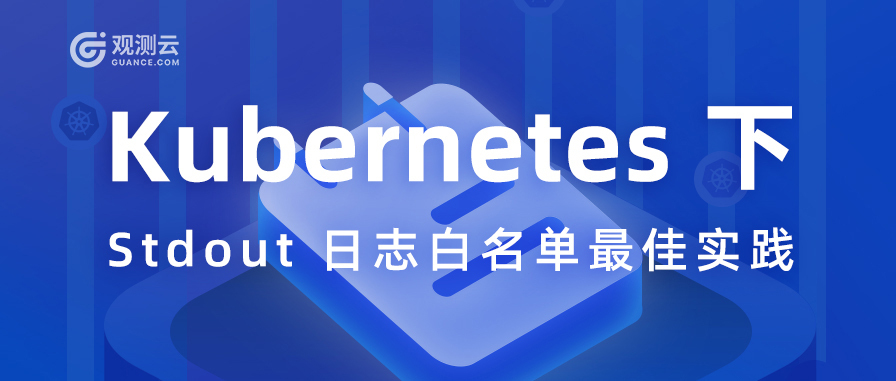
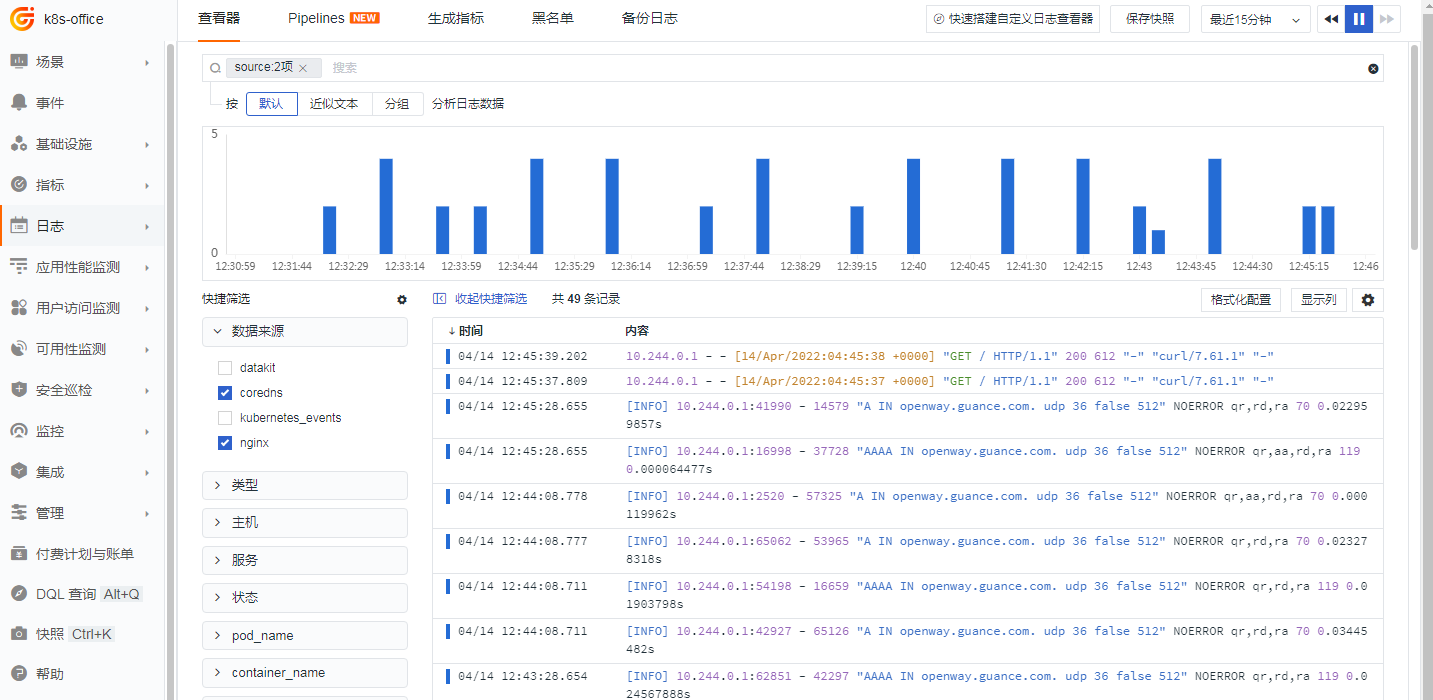
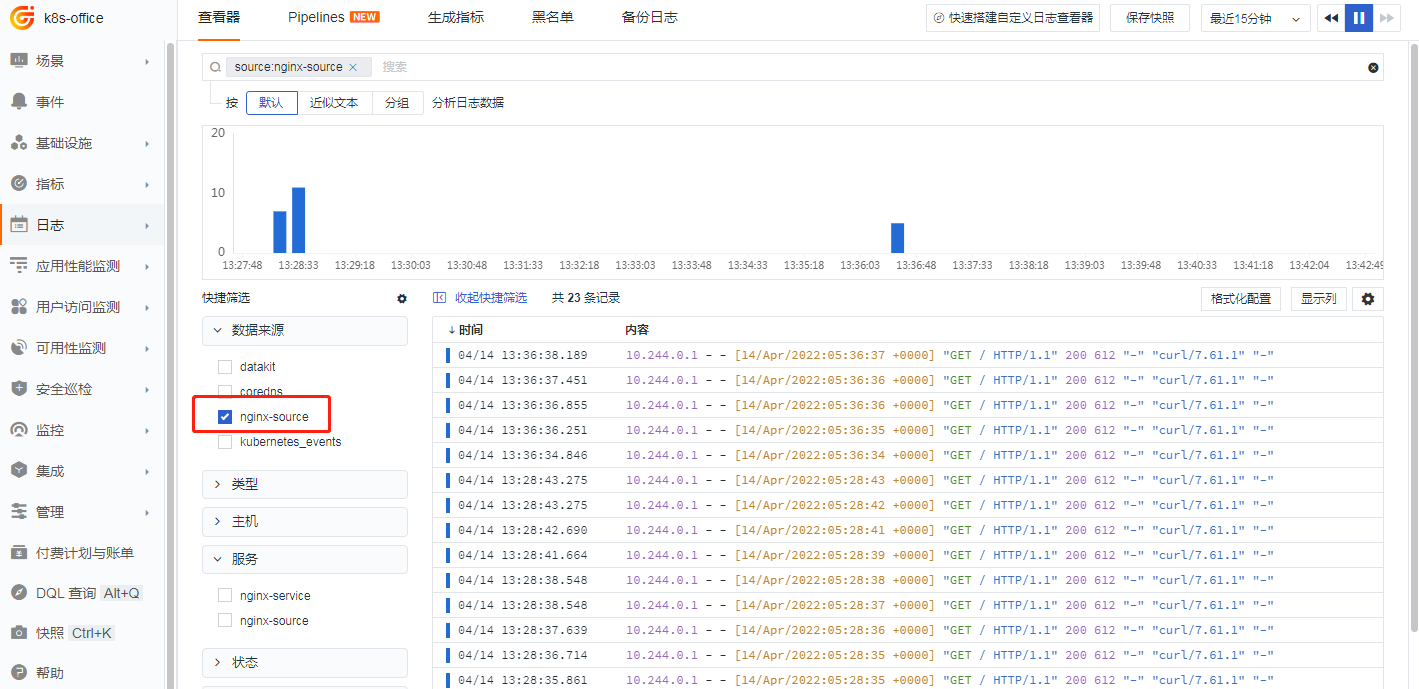
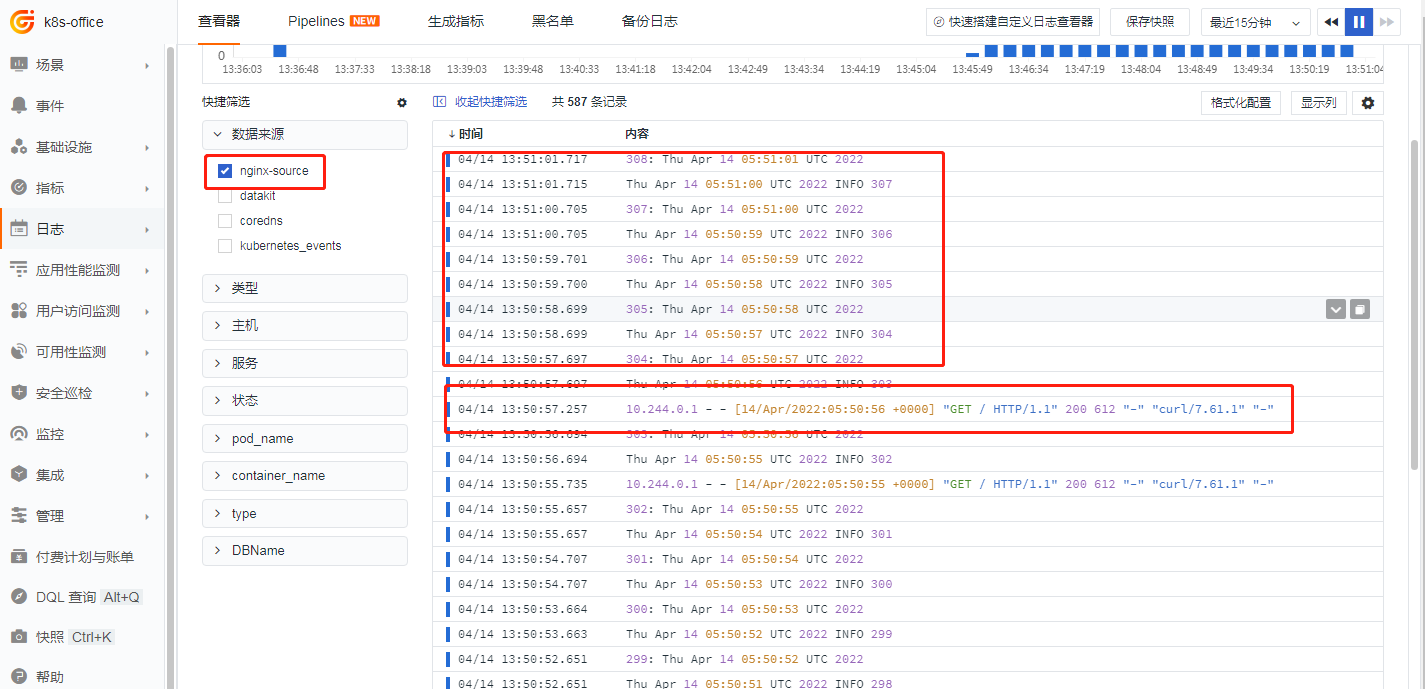
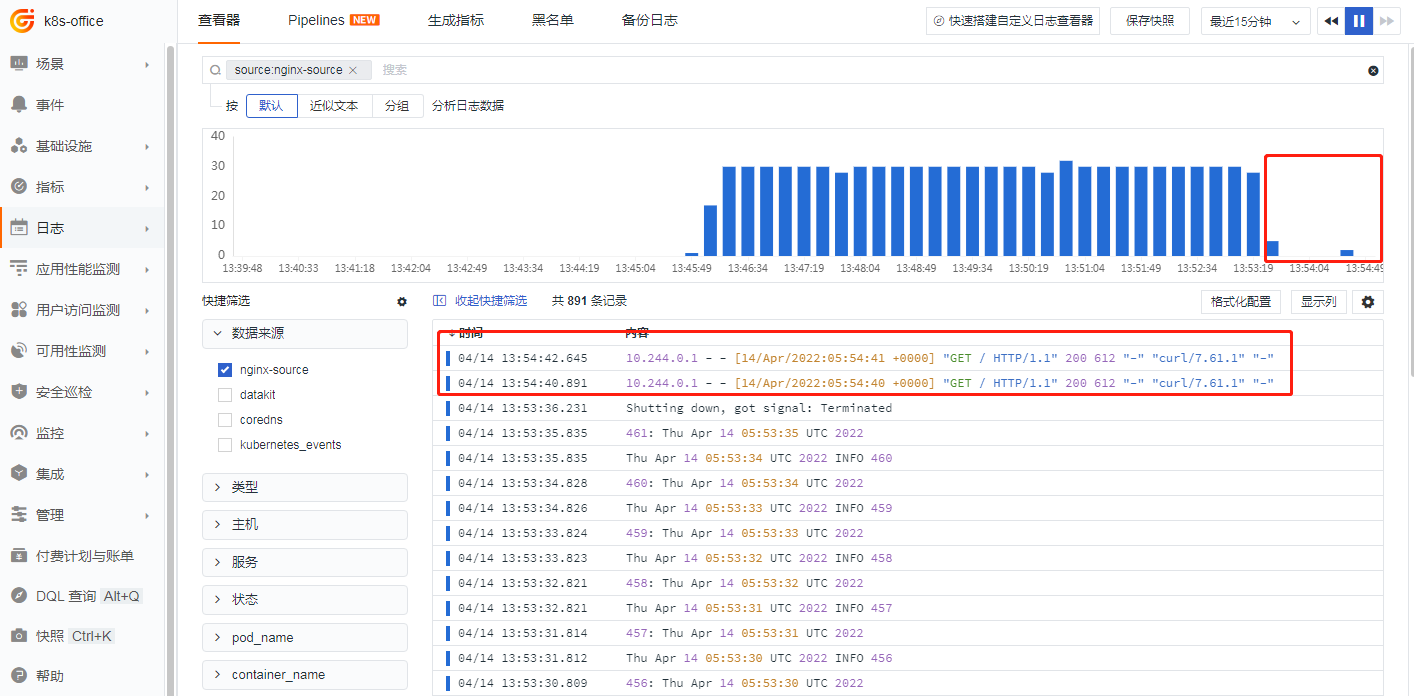











评论